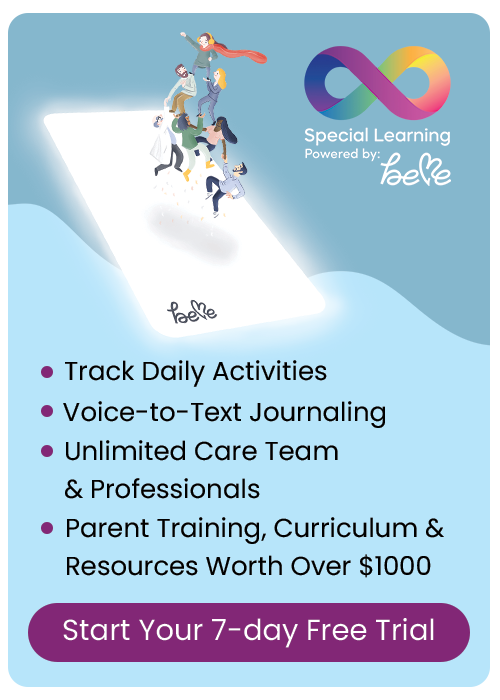Blog Categories
- ADHD
- Applied Behavior Analysis
- Autism Awareness
- Autism Service Providers
- Case Studies
- Dignosis
- Classroom Management
- Credentials
- Ethics
- Family Matters
- FAQs About LIVE Events
- Financial Planning
- Holiday Planning
- IEP's
- Panelists
- Private Equity in Autism & ABA Industry
- Psychopharmacology
- Sensory Processing Disorder
- Speech and Communication
- Subject Matter Experts
- Summer Planning
- Transition Planning
Back to school tips for educators and parents of children with ASD
educational products, web-based and downloadable tools and professional services to empower parents, teachers and providers so that they can help individuals with autism move up the skills spectrum intuitively, successfully and affordably.
Back to school tips for educators and parents of children with ASD
It’s that time of year again: the one with all of the hustle and bustle to make sure the school supplies are bought, the lesson plans are finalized and the after-school schedules are made. Back-to-school time is indeed an important time no matter if you look at it from the perspective of a parent or through the eyes of an educator. Both perspectives share the same goal: to have a productive year full of growth and learning.
This goal especially holds true for parents and educators of children with Autism Spectrum Disorder (ASD). Though students who are on the spectrum have a wide variety of abilities and challenges, and generalized planning does not always work for every level of the spectrum, there are some strategies teachers, with the help of the child’s parents, can incorporate to guarantee a successful school year for all involved.
Create and develop a close working relationship between the parents and teachers.
The Autism Society suggests creating an Individualized Education Plan (IEP) that is tailored specifically to the student and that outlines a program for meeting educational goals. This is a common practice in the education field, and that’s why the process of developing this vital document is of great interest and importance to educators, administrators, and families alike. To make this happen, it is imperative for the teacher and the parents to meet prior to the official start of the school year, and then continue to maintain open lines of communication throughout the school year to make sure everyone is on the same page. This gives parents and teachers the perfect opportunity to set their IEP and focus on specific goals, such as increasing verbal responses or even engaging in more interactions with their peers.
By meeting prior to the start of the year, parents and teachers are also able to go over current and proposed schedules and routines so that the student is able to transition easier into the hectic school environment. Parents can share the schedule they’ve been working with over the summer, and the teacher can share what the typical school week is going to look like. Then, those schedules can be adjusted so that the student has the best chance to adjust and excel in a new environment.
Create a structured classroom environment.
After creating the student’s IEP and learning the routine that they’re accustomed to, teachers should work to create a structured classroom that maps out each day’s activities.
Visual timetables that are strategically placed throughout the classroom that use images to convey the expected action help give children with ASD a sense of structure to their day. They can also create a sense of security that is essential to the child’s confidence in the classroom. Strategically placed timetables that are clear, concise and not overwhelming tend to do better than those that are too involved.
Also, one extra hint for teachers: You might consider supplying your classroom with noise-cancelling headphones, and sunglasses or tinted goggles. In the case that your student with ASD is overwhelmed on a sensory level (by bright lights, colorful decorations or excessive noise), having tools in the classroom that will cut down on that sensory overload may just be what saves the student from missing out on a day’s education because they lost focus due to distractions.
Utilize special subject interests as motivation for greater understanding.
Since many students with autism take things quite literally, some experts suggest using concise commands and instructions that refrain from metaphors or simile to avoid confusion. That is definitely credible advice. However, Carla Ragland, a retired 3rd grade teacher from Wills Point, Texas, who was certified to teach special education and taught numerous autistic individuals over her 26-year career, offered this bit of advice: Teachers should use anecdotal stories of the student’s interest to explain concepts or actions they need to learn. She shared an example of how she used anecdotal stories to communicate with her student, David,* when he just didn’t seem to be grasping what she was trying to convey.
“I used robot stories to teach David, one of my students with ASD. He was fascinated/fixated on robots, so I worked to utilize that interest in any special dealings I had with him. For instance, we had an issue where he kept coming out of the bathroom with his pants around his ankles, and he didn’t understand why the other children were so horrified by this or why it was not ok. After trying to approach him about it as I would with any other child, it hit me that I wasn’t speaking his language. So, I told him, ‘Good robots make sure to pull their puts and button them before they come out of their stall. Then, they wash their hands with soap, dry them, throw the paper towel in the trash, and calmly walk back into the hall to join the rest of the class.’ That was the last time we had a bathroom issue like that ever again.”
Autism Speaks also suggests getting to know what motivates a particular student, because motivation is essential to both attention and learning. For example, let’s say a student dislikes word problems, but loves dinosaurs. You could create new problems that add members of a brontosaurus clan, or multiply the food requirements of a tyrannosaurus rex. This would allow the student to become more familiar with the skills you’re trying to teach, and would build the confidence and motivation needed for the student to succeed.
By creating a plan, actively working to make sure transitions and daily interactions go smoothly in an environment that is conducive to fundamental learning, and focusing on the individual child’s key motivations, teachers and parents of children with autism can expect to have a wonderfully successful school year.
*The student’s name was changed in an effort to maintain privacy.




